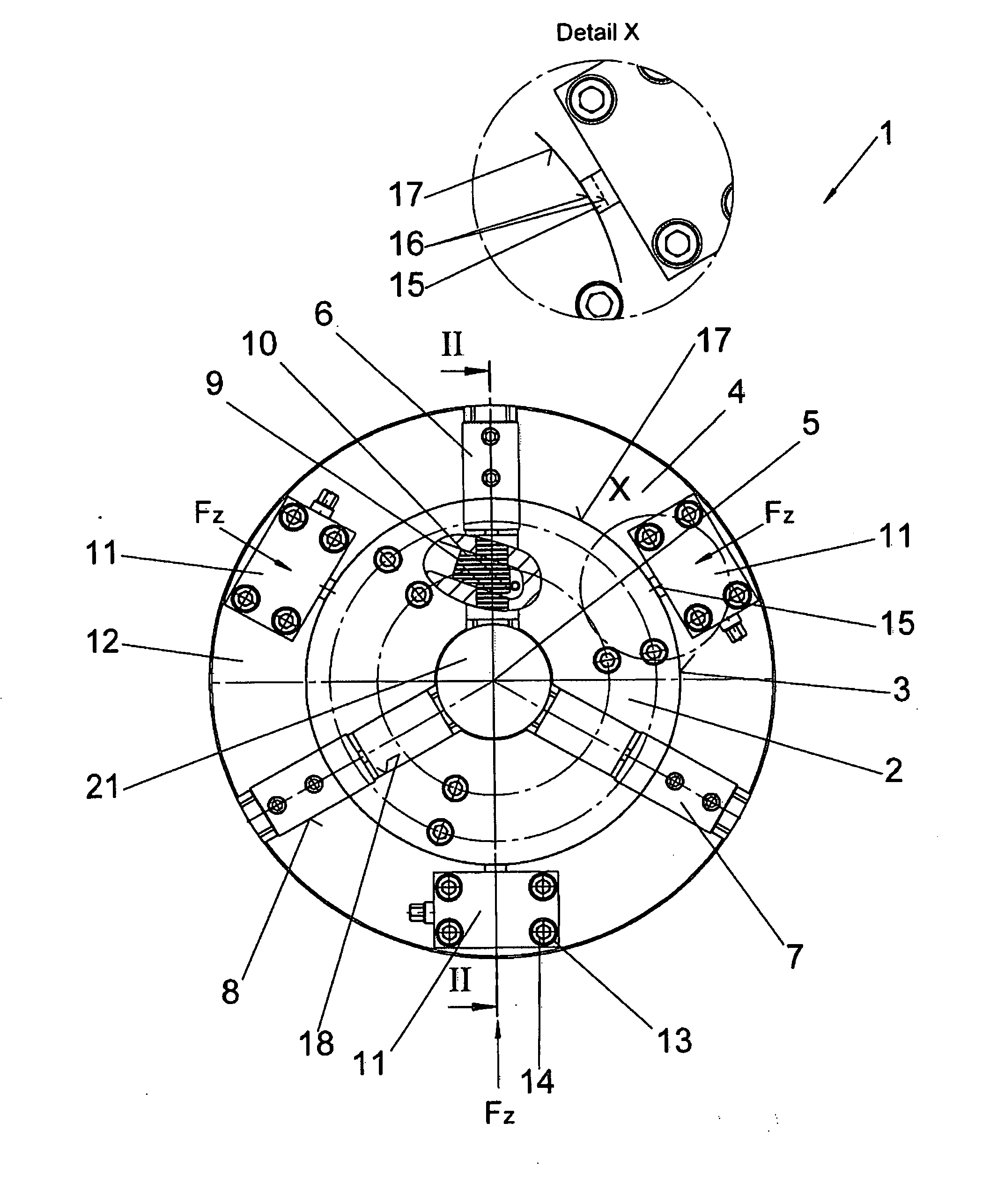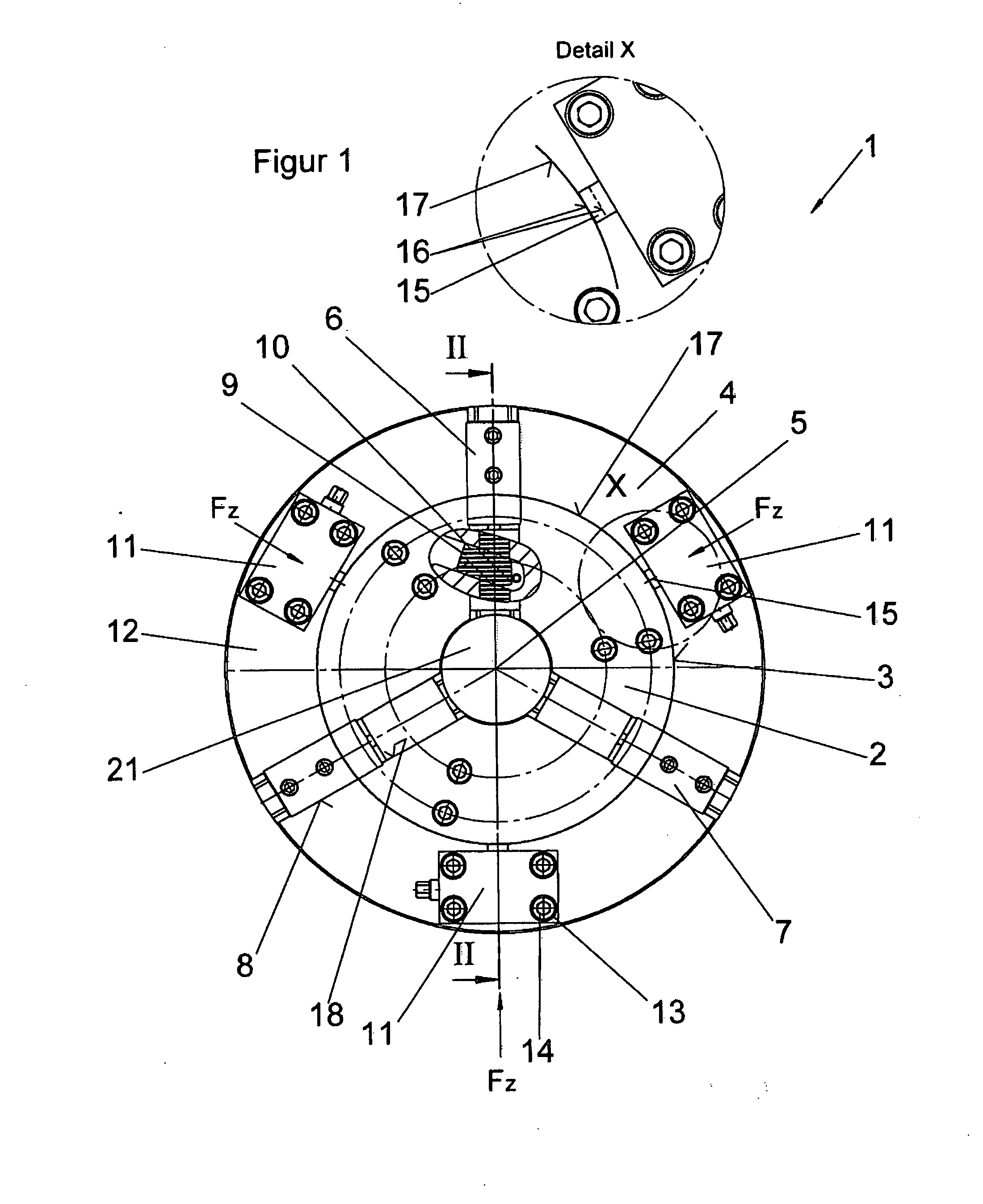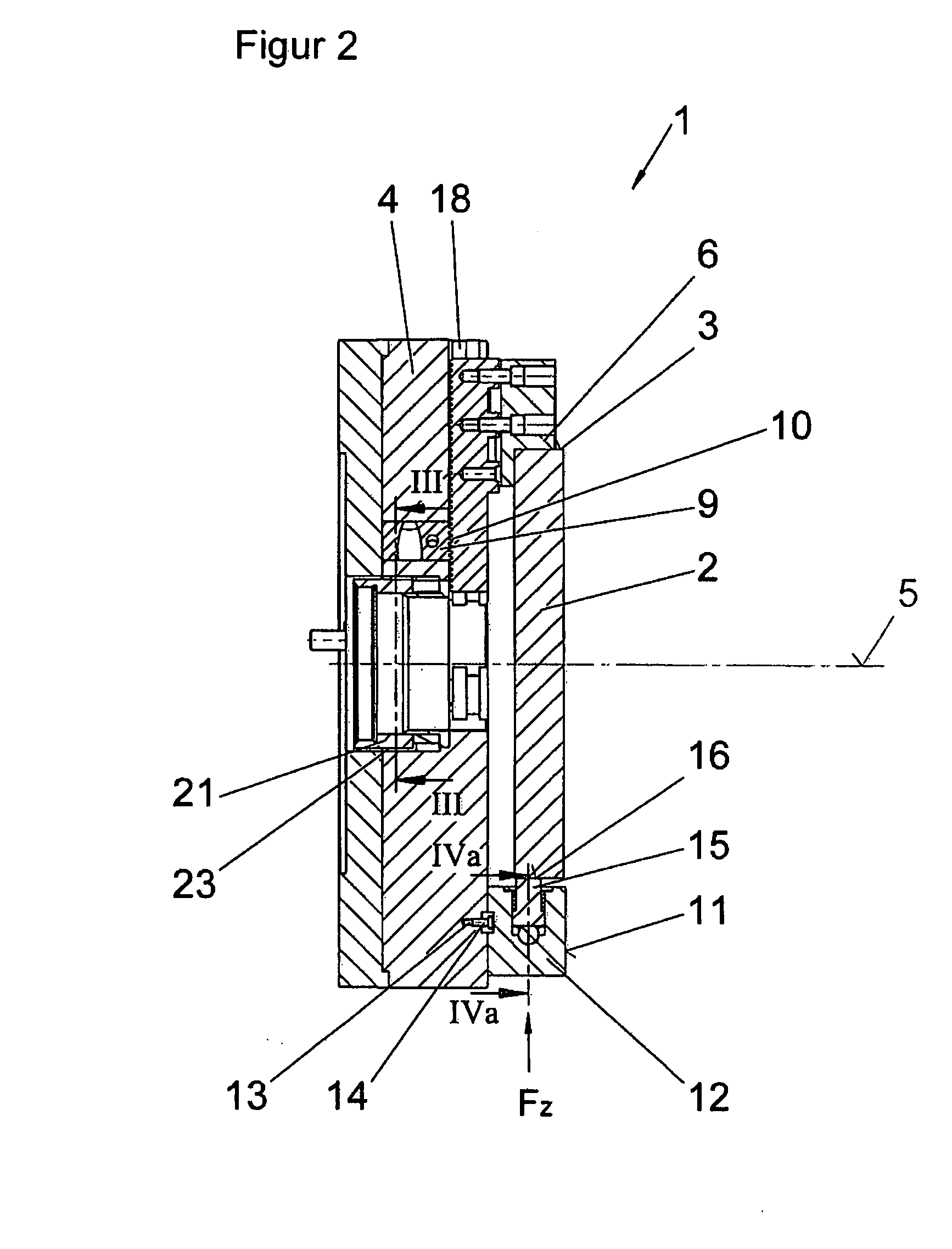At least one centering device is provided on a side which applies a centering force radially onto the workpiece, and therefore the workpiece can be centered exactly once it has been centered in three clamping jaws, because the corresponding centering device means that the longitudinal axis of the workpiece can be positioned flush in relation to the longitudinal axis of the chuck without the centering force acting on the clamping jaws. This is because the clamping jaws are connected in a force-locking arrangement with an actuating device, in particular with a
piston, via a wedge rod. However, the
piston is mounted in a base body of the chuck with a play that is a feature of the manufacturing process, and so this play can be compensated for by means of the corresponding centering device. As a result, the centering force of the corresponding centering device does not act on the clamping jaws and therefore on the wedge rod, the actuating device and the chuck, but rather compensates for the existing bearing play and / or error tolerances, which are in the region of about 5 μm, in particular with extremely large outside diameters. These are
significant error tolerances for precision components and can therefore be compensated for by the
centring devices in such a way that the workpieces in the chuck can be installed precisely centrally in the chuck.
During the
machining process, half of the existing material and therefore half of the inherent weight is sometimes removed from the workpiece by
cutting processes; therefore the inherent weight of the workpiece is reduced during the
machining process, with the effect that the geometrical clamping conditions are also influenced. The centering devices can be moved independently from the clamping jaws, therefore such changes in the clamping conditions can be compensated for by the
centring devices during the machining process, with the effect that the clamped workpiece can be positioned precisely centrally in relation to the chuck at all times without any variation in the clamping force exerted by the clamping jaws.
Furthermore, the centering device acts on the surface of the clamped workpiece, with the effect that the workpiece is supported not only by the clamping jaws but also by the
centring devices on the base body of the chuck.
It is particularly advantageous if three clamping jaws are arranged offset at an angle of 120° in relation to one another, and if one of the centering devices is arranged in between two adjacent clamping jaws. This construction results in the situation that six clamping jaws and centering devices converging on one another at an angle of 60° act on the workpiece, with the effect that the workpiece is reliably supported on the chuck not only by the clamping jaws but also by the centering devices.
Furthermore, the centering devices can be actuated synchronously, jointly, or independently from one another, with the effect that precise alignment of the workpiece is achieved by the one or more centering devices, depending on the clamping situation.
These setting possibilities mean that the position of the workpiece can be realigned with regard to the material reduction and therefore that the centering devices permit the realignment in position due to the change in position of the workpiece in relation to the midpoint of the chuck caused by the change in weight. As a result, the workpiece is positioned exactly centrally in relation to the chuck throughout the entire machining process; there is no need to remove and reclamp the workpiece because the workpiece is permanently held by the clamping jaws of the chuck throughout the machining processes. It is only the centering devices that need to be actuated in order to reposition the workpiece exactly centrally.
 Login to View More
Login to View More 


